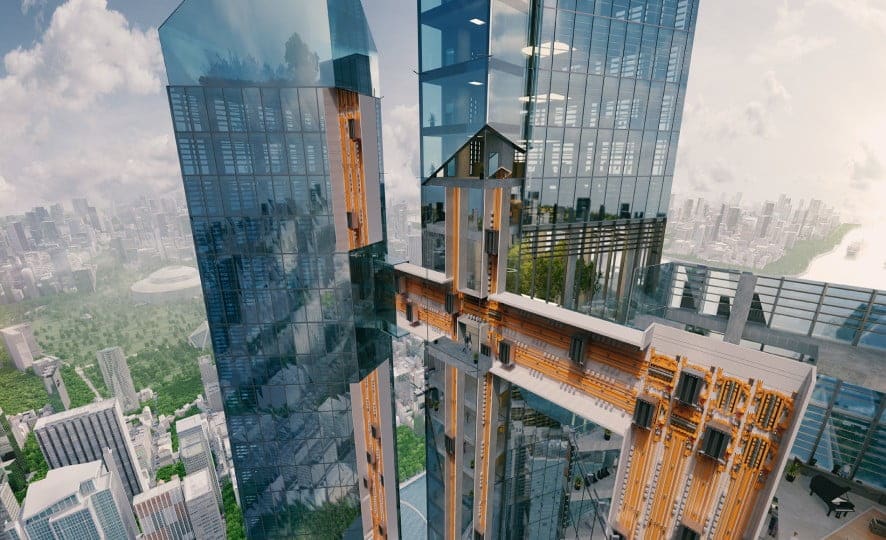The buildings of the future are getting taller. The concentration of people in urban areas and the lack of space will lead to the growth of more and more vertical megacities.
The average height of the major skyscrapers is currently 300 metres, but monsters such as the Burj Khalifa in Dubai (with its 828 metres) or the Kingdom Tower in Saudi Arabia (1001 meters when finished in 2020) will change the scenario.
The higher the future skyscrapers, the more accurate the technology will have to be. Future tallest skyscrapers in the world will require a totally new one. The current cable-based one has reached the maximum possible development, and it is necessary to innovate for this.
Horizontal and vertical
Multi, a research and development division of ThyssenKrup, has developed a system that exploits the technology of the linear motor (so to speak, the one underlying the Japanese Maglev). This system allows carriages and cabins to move alone or in blocks, horizontally or vertically: for this reason it has potential both in new lifts and on suspension bridges.
The elevators could become real vehicles capable of making us travel inside a skyscraper, or between one skyscraper and another in a city that will develop on multiple vertical and horizontal planes.
On a technical and economic level, cable lifts begin to suffer with heights exceeding 400 meters. In other words? They become inefficient and unsustainable.
The theoretical capabilities of a Multi "Maglev elevator", the company says, could even cover heights of 5000 metres. On a practical and current level, however, the system can already support heights of up to 1600 meters without problems and without loss of efficiency.
I don't know if I am astonished at the data itself or imagine a skyscraper 5 kilometers high.
“Multi is an ideal solution for the United Arab Emirates, the country that is adopting cutting-edge technologies as part of its urban development,” says Prof. Michael CesarzMiguel, CEO of Multi.
What about earthquakes?
The tallest skyscrapers that house current elevator technology require increasingly solid and heavy cables, but the oscillations of the skyscrapers due to the wind can put them under real stress, even requiring the suspension of service on particularly windy days.
Multi does not require cables and allows the use of multiple lift cabins in the same compartment. This solves both the problem of oscillation stress and the problem of oscillations themselves! By reducing the number of elevator shafts in a skyscraper, the wind affects less, and even earthquakes cause less jolts.
“The maglev elevator is not a mass product and costs more than a conventional elevator, but it requires fewer elevator shafts and therefore the cost can be amortized,” he says Cesarz Miguel.
In 5 years everything will change
Multi will show its technology in action during Expo 2020 in Dubai. Of the 20 projects currently under development by the company, 3 are located in the Persian Gulf.


